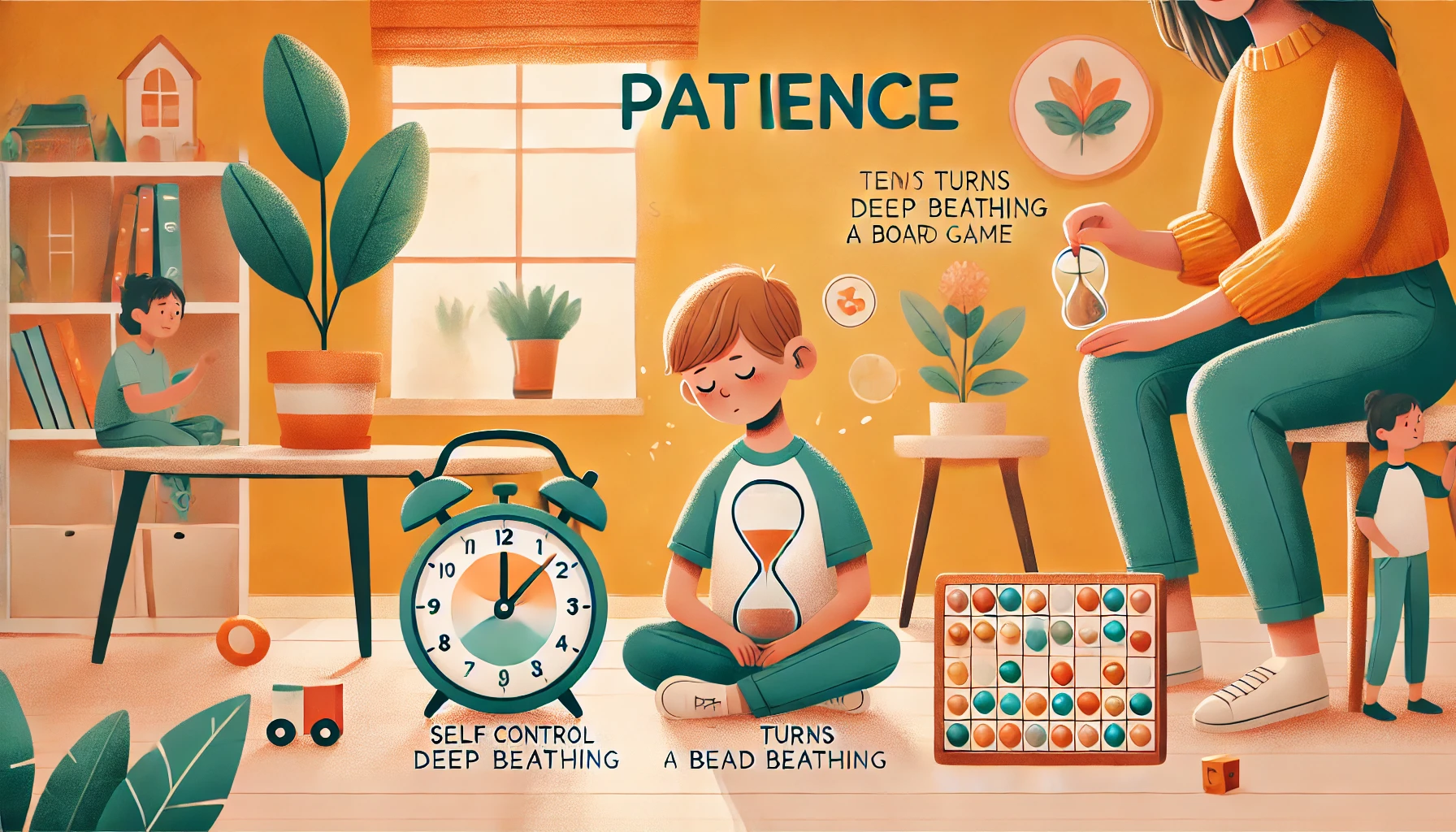How to Teach Young Children About Patience and Waiting
Patience is a valuable life skill that helps children develop self-control, emotional regulation, and the ability to handle frustration. Teaching young children how to wait for things calmly improves their social interactions, focus, and ability to manage delayed gratification. Parents can nurture patience through daily routines, interactive games, and positive reinforcement. In this article, we’ll explore practical ways to help children learn patience in everyday life.
Why Teaching Patience is Important
- Encourages self-control – Helps children manage emotions and impulses.
- Improves problem-solving skills – Teaches kids to think before reacting.
- Strengthens focus and attention – Helps children stay engaged in activities.
- Reduces frustration and tantrums – Encourages calm and measured responses.
- Prepares for school and teamwork – Helps children handle waiting and turn-taking.
1. Model Patience in Everyday Situations
Children learn patience by watching how adults handle waiting and frustration.
Activity Idea:
- When waiting in line, say, “I know waiting is hard, but we can use this time to talk or count together.”
- Show self-control when dealing with delays, like traffic or long waits.
- Use phrases like, “I’m taking deep breaths while I wait” to demonstrate coping strategies.
What Kids Learn:
- That patience is a skill even adults use
- How to handle waiting in a calm way
- The importance of staying positive in frustrating situations
2. Use Timers to Help Visualize Waiting
Seeing time pass makes it easier for children to understand and manage waiting.
Activity Idea:
- Use a sand timer or countdown clock to show how long they need to wait.
- Say, “When the timer is finished, it will be your turn.”
- Gradually increase waiting times to build patience.
What Kids Learn:
- How to measure and understand waiting times
- That patience leads to rewards
- The importance of taking turns and sharing
3. Play Waiting and Turn-Taking Games
Games that require patience make learning this skill fun and interactive.
Activity Idea:
- Play “Red Light, Green Light” to practice stopping and waiting.
- Try board games that involve taking turns, like “Candy Land” or “Chutes and Ladders.”
- Do a puzzle or building activity where kids take turns adding pieces.
What Kids Learn:
- How to wait their turn without frustration
- The joy of shared activities and teamwork
- The importance of self-control in play
4. Encourage Delayed Gratification with Small Challenges
Helping children wait for small rewards strengthens their patience and discipline.
Activity Idea:
- Try the marshmallow test: Offer one treat now or two treats if they wait a few minutes.
- Use a reward chart where children save stickers for a bigger prize.
- Teach saving money by setting aside coins for a desired toy instead of spending right away.
What Kids Learn:
- The benefits of waiting for something better
- How to control impulses and think long-term
- That patience often leads to greater rewards
5. Read Books That Teach Patience
Stories help children relate to characters who practice patience.
Activity Idea:
- Read books like Waiting Is Not Easy! by Mo Willems or Llama Llama Red Pajama by Anna Dewdney.
- Ask, “How did the character feel when they had to wait?”
- Discuss how patience helped the character achieve their goal.
What Kids Learn:
- That waiting is a normal part of life
- How patience helps people feel happier and less frustrated
- How to apply patience in their own lives
6. Teach Breathing and Relaxation Techniques
Helping children manage frustration while waiting makes patience easier.
Activity Idea:
- Teach deep breathing exercises: “Smell the flower, blow out the candle.”
- Encourage counting to 10 or singing a song while waiting.
- Provide calm-down activities like coloring or reading a book.
What Kids Learn:
- How to stay calm when feeling impatient
- That waiting can be a peaceful experience
- Simple techniques for self-regulation
7. Create Everyday Opportunities to Practice Patience
Building patience into daily routines reinforces the habit naturally.
Activity Idea:
- Have children help cook, teaching them to wait while food bakes or boils.
- Encourage waiting for a favorite activity, like watching a TV show or going outside.
- Use “first, then” language: “First we finish lunch, then we can play outside.”
What Kids Learn:
- That patience is needed in everyday life
- How to stay engaged while waiting
- The connection between patience and rewards
8. Praise and Reinforce Patient Behavior
Recognizing when children wait calmly encourages them to continue practicing patience.
Activity Idea:
- Say, “Great job waiting your turn! That was very patient of you.”
- Use a “patience star chart” to reward moments of self-control.
- Ask, “How did it feel to wait calmly instead of getting upset?”
What Kids Learn:
- That patience is appreciated and valued
- How to reflect on their own progress
- The positive emotions that come from self-control
Final Thoughts
Teaching young children about patience and waiting helps them develop self-control, focus, and emotional regulation. By modeling patience, using visual timers, playing waiting games, and reinforcing good behavior, parents can help children build the skills needed to handle delays and challenges with confidence.
